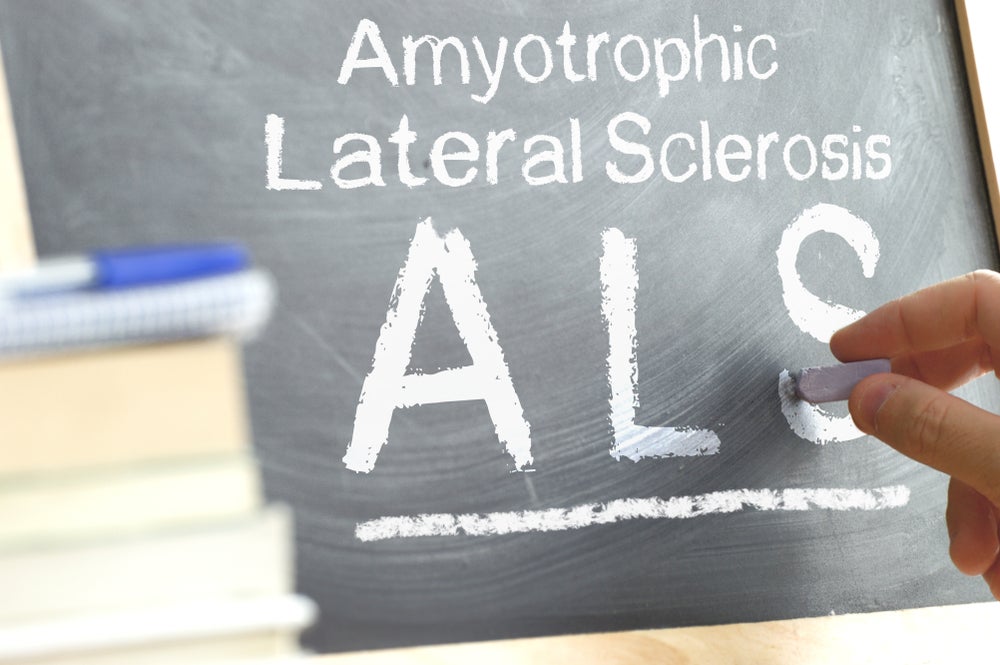Amyotrophic lateral sclerosis (ALS), also known as motor neuron disease (MND), is a severely debilitating, rare and ultimately fatal neurodegenerative condition caused by a combination of genetic and environmental factors. However, the causative pathogenic mechanisms in ALS remain unclear. ALS is characterised by progressive degeneration of both upper motor neurons and lower motor neurons leading to death, frequently from respiratory failure, within a few years.
Speaking to GlobalData, several key opinion leaders (KOLs) identified the greatest unmet needs within the ALS space: earlier diagnosis, identification of biomarkers, efficacious first-line treatment options and disease-modifying therapies (DMTs).
Due to the variety in the presentation of ALS development and symptoms, there have been historical difficulties in diagnosing patients promptly. The diagnostic delay leads to most patients going up to one year without a correct diagnosis of ALS, which in turn delays them from receiving treatment. Then, once they do start treatment, current treatment options have limited efficacy.
Physicians will not give such a painful diagnosis until they have certainty
KOLs have stated that there are three main reasons why obtaining an ALS diagnosis takes so long. Firstly, primary care physicians (PCPs) and general practitioners (GPs) often do not think of ALS when the symptoms are first monitored. There is a lack of multidisciplinary clinics that are more specialised in dealing with neurodegenerative disorders where patients could be referred to early on in their treatment journey. Secondly, the lack of diagnosis tests for ALS adds to the diagnosis time. Thirdly, due to the devastating nature of the disease, physicians will only give the official diagnosis when they are confident that it is indeed ALS — typically in a tertiary care (specialist) clinic.
Of these three needs, KOLs placed the most emphasis on the importance of educating PCPs and GPs about the indication and early warning signs. “The problem is that we need to educate more GPs. They know it, but sometimes they diagnose it too late, and we can lose precious months. Because it is painful, some patients in poor social situations can be referred late. That is a major hurdle for the care,” one KOL noted.
Another unmet need is the lack of prognostic and diagnostic biomarkers, which make it difficult for a multidisciplinary team to implement a personalised approach to ensure higher efficacy with treatment choice. With ALS, biomarkers selected for use in clinical trials have varied from study to study, reflecting the absence of a definitive gold standard biomarker widely agreed upon by ALS researchers. KOLs interviewed by GlobalData stated that biomarkers could be further used in the diagnosis of the disease, in determining prognosis, and in the treatment algorithm to help identify personalised treatment regimens for patients.

US Tariffs are shifting - will you react or anticipate?
Don’t let policy changes catch you off guard. Stay proactive with real-time data and expert analysis.
By GlobalDataFirst-line treatment alternatives to the standard of care (riluzole) that meaningfully slow the disease progression and extend survival are a major unmet need for ALS. While ALS will almost always be fatal unless a curative agent becomes available, there is a need for future therapies to increase a patient’s lifespan further than what is currently achieved with marketed agents.
Despite the availability of several marketed drugs, all of them lack efficacy in their mechanism of action and only succeed in prolonging life by a moderate margin. Glutamate antagonists (riluzole) only provide a six-month improvement in prolonging a patient’s life. Free radical scavengers are typically used as an add-on therapy and only have a marginal survival impact. Therefore, there is a need for other drug classes that can offer alternatives to the standard of care treatments with better symptom control and life-prolonging benefits.
This point was noted by a KOL interviewed by GlobalData: “I always tell all my patients, whether it’s Radicava or riluzole – these drugs are not such dramatically game-changing that it’s worth not feeling good each day. So, if you don’t feel good when you take the drug, then you probably should not take it.”
A drug with curative capabilities will be revolutionary
Finally, there is a great unmet need for treatment options that are disease-modifying, targeting the underlying cause of ALS to halt, reverse, or cure the disease rather than focusing on slowing down progression.
The heterogeneity of ALS goes beyond the differences that are found in sporadic ALS (sALS) and familial ALS (fALS). Thus, managing all ALS patients with the same generic anti-inflammatory drugs is not effective. In the current treatment algorithm, there is only one approved DMT – Biogen’s Qalsody (tofersen), which is an antisense oligonucleotide, proposing a curative approach. However, Qalsody is only indicated for patients with SOD1-mediated ALS, which is a small segment of up to 20% of fALS and 2% of sALS cases. As a result, the vast majority of ALS patients remain without a DMT option. Most patients need to take medication either daily or as needed for the rest of their lives to slow disease progression.
According to KOLs interviewed by GlobalData, a drug with curative capabilities will be revolutionary. In the current ALS pipeline, there are two stem cell therapies, BrainStorm’s NurOwn (debamestrocel) and Corestem’s Neuronata-R (lenzumestrocel), and another ASO, Ionis Pharmaceutical’s ulefnersen sodium, which aim to address this unmet need. They will all have to translate clinical trials into successes, which KOLs have stated has been a stumbling block for previous pipeline assets. If approved, these complex biologics will command a high price that may affect access to these treatments, which in turn may limit uptake; therefore, it is likely that opportunities for pharmaceutical companies to develop alternative disease-modifying therapies will remain through the end of the forecast period (2019 to 2029).





